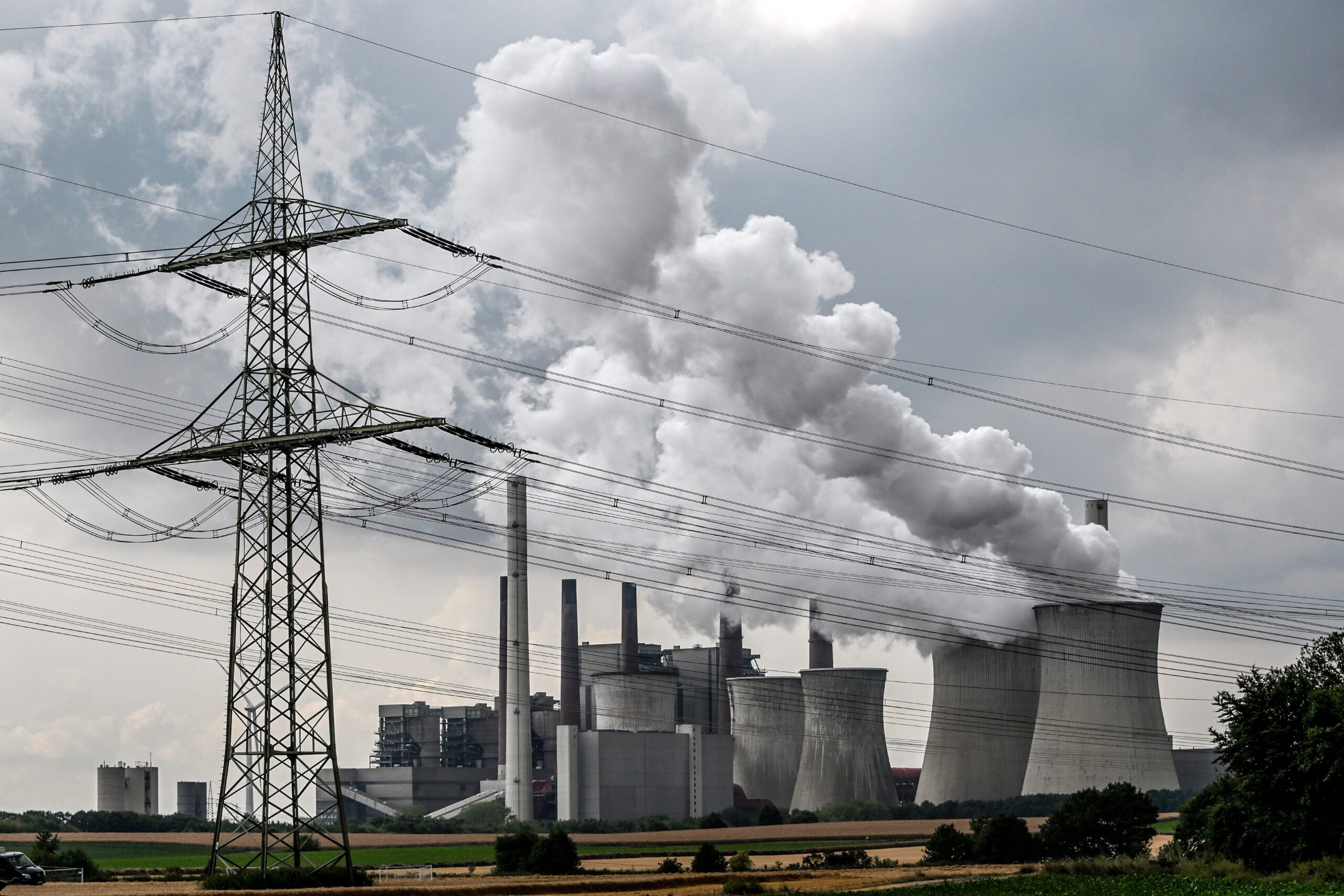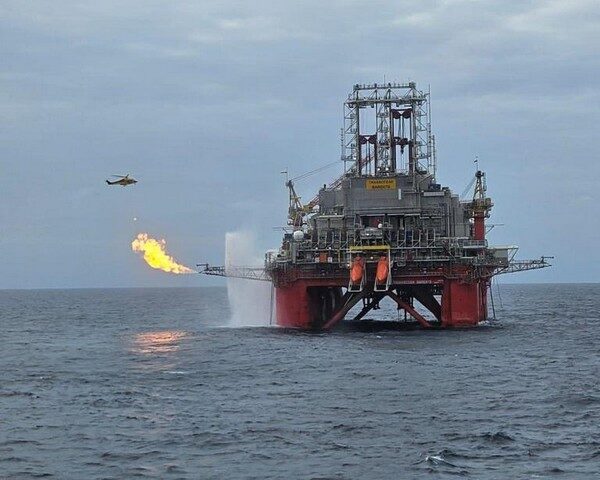Unfortunately, as we leave summer behind and prepare for winter, the global energy crisis worsens.
The situation has shifted from one requiring urgent attention to one that could push the EU into recession and likely to impact the global economy.
Below, I summarise some of the latest highlights affecting global energy, some of which were discussed at Gulf Intelligence’s energy markets video podcast last month.
EU natural gas crisis
Europe’s gas prices have broken a new record. On August 26, benchmark TTF spot contracts for December delivery exceeded €340/MWh (about $100/mmBTU) – 16 times higher than pre-pandemic levels.
How high can they go? Europe will not see ‘normal’ prices anytime soon – not before 2026 after the Qatar LNG expansion is completed and comes into operation and new US LNG comes into the market.
However, with EU gas storage filling fast and the German gas storage already full, the TTF December gas price fell to €270/MWh on August 30.
European wholesale gas markets are now pricing in multi-year challenges, with TTF forward prices for Q1 2026 delivery at €85/MWh, five times higher than pre-pandemic
Most European regulators and governments hoped this energy crisis would last only one winter.
But clearly, replacing Russian gas is a multi-year challenge.
Tension over turbines that Russia blames for the reduction of Nord Stream 1 (NS1) flows has put the focus on the equipment it needs to operate.
Russia is pointing to outstanding issues around western sanctions, but Germany is blaming Russia for deliberately holding up the process.
Without a solution, if the last operating turbine becomes unavailable, gas supplies through NS1 are at risk of being completely cut.
According to Bank of America, European gas inventories – especially in Germany – could be “exhausted” by the end of 2022 if the NS1 supply is entirely cut.
Morgan Stanley forecasts “an exceptionally tight winter in 2023/2024” and warned that if China increases LNG imports as it emerges from its COVID lockdowns, it “could tighten the LNG market further”.
Due to rising prices, Europe paid €185 bln extra for energy imports in the first half of this year.
Europe buys 5,000TWh of gas per year which, based on an average price of €70/MWh last year, cost around €350 bln.
With 2023 gas prices expected at €240/MWh, the extra cost will be €1 trln which means that in the EU, about 8% of individual incomes in 2023 could go on paying for gas.
Shell’s CEO, Ben van Beurden, warned that Europe’s energy crisis would last more than one winter.
He warned that it was a “fantasy” to think energy and gas shortages could be resolved quickly, saying the region may have to prepare for several years of rationing.
Belgian Energy Minister Tinne Van der Straeten warned that the next five to ten winters in Europe would be “terrible” unless the EU swiftly moves to impose a cap on runaway gas prices.
She also said the link between gas and electricity prices needed urgent reform.
EU electricity price crisis
Electricity prices in France for 2023 have exceeded €1000/MWh – over 20 times the last decade’s average.
Before 2020, anything above €75/MWh was considered expensive.
In addition to the energy/gas crisis, the all-time high in European electricity prices is caused by problems in the French nuclear industry, exacerbated by high gas and coal prices, as well as drought across Europe, including low water levels across major rivers such as the Rhine.
Currently, 31 of France’s 56 nuclear plants are offline due to technical or maintenance issues.
This is the equivalent of the power generation capacity of the Benelux countries.
As a result, France has gone from being the largest exporter of power in Europe over the last decade to becoming a major importer from all its neighbours, including Belgium, UK, Germany, Switzerland and Spain. The French government is urging businesses to cut energy use or face possible rationing.
This has contributed to Germany’s electricity prices in 2023 skyrocketing to over €1000/MWh.
At those levels, the value of the power markets next year could be over 11% of German GDP.
However, with German gas storage full – quicker than expected – and after the threat of “emergency intervention”, the German 1-year electricity fell on August 29, down to €625/MWh.
Based on electricity prices for July 2022, Euronews ranks Cyprus among the ten most expensive countries in the EU for electricity.
Norway plans to curb electricity exports to Europe as it grapples with a severe drought affecting its hydroelectric production.
Its neighbours warn Norway that it is undermining the European energy market and European’ solidarity’.
The UK has warned it may do the same.
In Europe, this summer’s drought had a knock-on impact on power generation from hydro, down 26% in 2022.
Germany, the European Commission and Austria joined calls for ‘fundamental reform’ of the EU power market – looking at decoupling gas and electricity markets to curb rising power prices in Europe.
Spending on short-term measures in EU countries has soared. In Greece, it now amounts to almost 4% of GDP.
European Commission President Ursula von der Leyen has confirmed that the EU is planning a short-term “emergency intervention” in its power market to curb soaring prices.
She said, “we have to develop an instrument which ensures that the gas price no longer dominates the electricity price.”
This could be ready for the emergency meeting of the EU energy council on September 9 that could rubber stamp the decoupling proposals.
EU consumers and business
Consumers simply cannot pay these prices, and many will go into energy poverty.
Also, the harsh reality is that most businesses will face significant financial difficulties. This applies to Cyprus too.
German Finance Minister, Christian Lindner, said the government needs to address soaring power prices “with the utmost urgency.”
A leading economist warned of a “gigantic shock” looming for Europe’s biggest economy.
In an interview with Bild am Sonntag newspaper, Lindner said swift action is required or “inflation will be increasingly driven by an electricity crisis.”
German inflation rose to 8.8% in August, the highest since the winter of 1973/1974.
This may force the ECB to raise eurozone interest rates sharply.
Following the 3-day halt of NS1, Europe braces for rationing risks in the Russian gas showdown.
It faces the risk of blackouts, rationing, higher prices and a severe recession if Russia further slashes gas deliveries.
The worst-case scenario would entail a complete cutoff of Russian gas to the EU and an early cold snap.
With few alternative supplies available, a surge in heating demand would propel prices to new heights, which could foment social and political unrest.
Amid warnings of blackouts and social unrest this winter, Europe’s politicians have earmarked about €280 bln in support packages to assist businesses and households.
But that was before the latest energy price rises.
It is not enough; it is woefully inadequate and dwarfed by the emergency’s scale.
The crisis will test ‘solidarity’ between EU member states as governments are forced to decide how to keep key industries going.
Norway shows that the EU energy crisis preparation is being undermined already – the EU’s ‘solidarity’ plan for countries to share energy resources in case of emergency is stumbling at the first test.
The FT said, “worries are growing of a nightmare scenario this winter — one that sees natural gas and electricity shortages as energy prices hit fresh highs. Europe is at ground zero of this threat.”
Increasingly, the energy crisis dominates Europe’s autumn agenda.
But the impression is of governments desperately chasing the problem with winter on the horizon rather than finding ways of getting on top of it.
The energy crisis is largely responsible for spiralling inflation, the collapse of the Euro and British Pound against the US dollar, a growing unease amongst citizens, and most likely a deep recession across Europe.
ABN AMRO confirmed that it had changed its base scenario for the eurozone economy, which now includes a recession in the coming quarters.
Eurozone inflation is forecast to stay higher for longer as gas prices surge, leading to higher interest rates – many economists predict that consumer prices will exceed 10% this year and that recession will hit the bloc in 2023.
The ability of European countries to keep the lights and heat on this winter depends on how this crisis is managed.
A failure to secure adequate energy supplies and the economic impact of the energy crisis is already leading to political unrest and economic turmoil.
The situation will worsen from September onwards.
So far, the EU is paralysed and has yet to respond.
It borders desperation for what consequences could come this winter.
The total pressures of inflation, high prices, loss of jobs, and rising interest rates are putting huge stress on the politicians – but Cypriot politicians appear to be casually indifferent to this turmoil, even if most Cypriots are struggling to cope.
While many EU / UK government officials are on vacation, the region’s energy-intensive industry is struggling, shutting down.
A day doesn’t go by without a new metal smelter, a glass company, a fertiliser producer, or a chemical group announcing output cuts or closures.
The UK faces a ‘cost of doing business’ crisis as energy bills rise fourfold – “winter could spell the end for many businesses” – the same applies to many parts of Europe, especially Germany.
Bloomberg revealed that the UK government is preparing for blackouts this winter.
France, Germany and Ireland are also vulnerable to blackouts.
‘The’ new shock’ for European markets is that as gas and electricity prices spike, they fuel inflation fears.
With financial markets now bracing for higher prices, a faster pace of interest rate hikes and a deeper economic downturn will be inevitable across the whole of the eurozone – including Cyprus.
The oil situation
Fears of more Iranian supply and a weakening economy are prompting a rethink in Saudi Arabia.
It could lead OPEC+ to cut oil production to keep prices high.
Saudi Energy Minister Prince Abdulaziz bin Salman warned that OPEC+ could reduce oil production to alleviate market dysfunction and volatility.
This, and an expectation that oil demand will be strong in the months ahead, have sent the Brent price back to over $100/b.
Slowing economic growth and a possible Iranian nuclear deal are pulling prices down.
But absent a deep recession that would sink global oil demand, prices are set to increase toward the end of the year and early next year, some analysts say.
The looming EU embargo on Russian seaborne oil imports at the end of this year and Chinese recovery are also expected to push prices higher as trade flows adjust.
The releases from the US Strategic Petroleum Reserve (SPR) are also set to end in October.
In addition, utilities in Europe and Asia are switching from gas to oil-fired fuel generation due to exceptionally high natural gas prices.
These could send oil prices over $110/b in Q1 2023.
UBS sees $125/b of oil in the coming months.
Experts have estimated that Iran could add 1 million barrels of oil daily to global markets, significantly easing tightness in supplies as Europe looks to impose a partial ban on Russian crude by December.
But OPEC+ may have its own answer to counteract this.
Saudi Arabia’s recent warning that OPEC+ could cut production sparked a rally in oil prices that analysts say was the intended purpose as threats to the kingdom’s revenue loom.
Saudi’s break-even price is estimated at $85/b.
Meanwhile, because of high prices and increased exports, Iran’s oil income rose five times from last year and eleven-fold compared to the year before despite US sanctions.
US not making it easier
Natural gas prices in the US are expected to reach $10/mmBTU, the highest in 14 years, increasing pressure to cut exports to Europe.
Similarly, there is pressure to reign-in oil exports.
According to the WSJ, US Energy Secretary Granholm has sent an explosive letter to American oil refiners: “Given the historic level of US refined product exports, I again urge you to focus in the near term on building inventories in the US”.
In effect, the US is prioritising its own needs. The Energy Department urges big refiners not to increase fuel exports and instead focus on boosting domestic stockpiles.
The message to Europe is ‘tough luck’.
Global factors
LNG project approvals are forecast to slow after 2024 as governments transition from fossil fuels and accelerate investments in low-carbon energy infrastructure.
It is understood that Iran and Russia are making moves to create a global natural gas cartel.
They have been quietly building the foundations for a potential “OPEC of natural gas,” which could have serious implications for world gas markets.
With China facing heatwaves and droughts, its coal power generation is nearing a record, providing nearly 70% of its electricity.
The situation is similar in India.
In response to the crisis, Asia has put serious climate change action on hold.
While all this is happening, China is building an alliance with Russia, with the potential that China will receive low-cost energy.
Russia will receive Chinese goods and, most importantly, Chinese technologies.
The other implication is that the lower-cost energy imports Europe used to buy from Russia will now potentially go to China.
What is becoming extremely worrying is that despite this perilous situation, the government is more or less paralysed in the grips of an intensifying presidential election campaign in Cyprus.
The tsunami about to hit the island from this global energy crisis – and its severe economic impact on the eurozone – is not being seriously addressed, with an increased risk that, by the time a new government is in place next year, Cyprus may find itself in a Deja-Vous situation with the 2013 economic crisis.
The presidential candidates must prepare to face these repercussions, but are they?
Dr Charles Ellinas is Senior Fellow at the Global Energy Center, Atlantic Council
Tw: @CharlesEllinas










